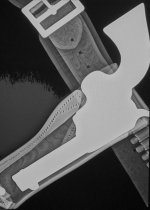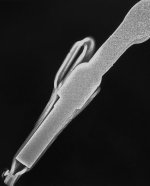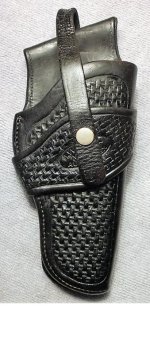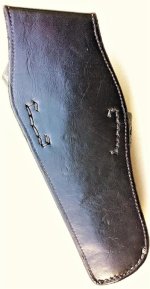Wyatt Burp
Well-known member
Having studied Brillology in my correspondence course on S&W and Colt Forum reading Red Nichol's posts and using "Holstery" as my textbook, I've been concentrating on tight fit and proper welt structure on holsters in general based on the Brill welt concept. I just finished this Ruger holster and was sure that it would be too tight and was a little panicked. But the fit turned out perfect. Turned upside down, both it and the basketweave N frame holster I made earlier hold the guns tight yet release easily when drawing. Hammer thong added anyway on the Ruger holster. The welts are 2 layers but 3 layers at the trigger guard and toe, hand stitched.
The belt, Ruger holster, and soon to be finished snub holster are for the same person. I still have a lot to learn, but all the Brill info found on this forum was a revelation.




The belt, Ruger holster, and soon to be finished snub holster are for the same person. I still have a lot to learn, but all the Brill info found on this forum was a revelation.




Last edited:











